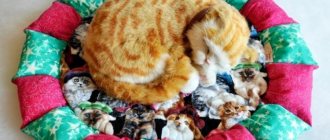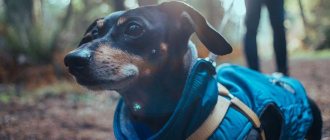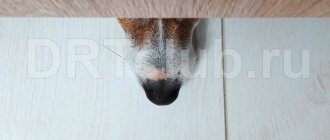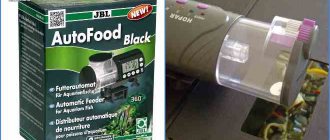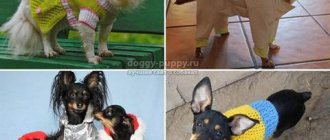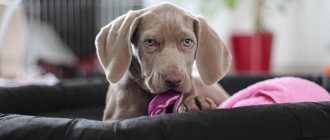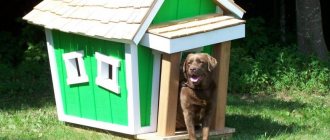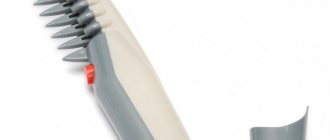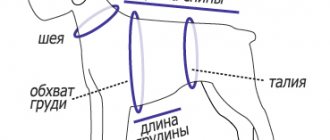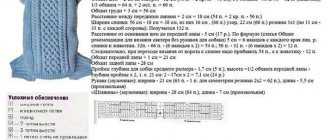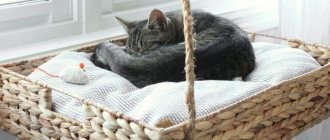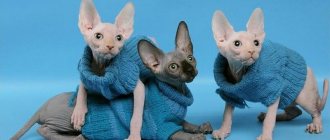During the cold season, clothing for the Yorkshire Terrier must be present so that the dog feels warm and comfortable in it. Despite the fact that the breed originated from the northern part of Europe, namely from England, where the average air temperature in January-February is 4-5° below zero, it is decorative.
The pet spends most of its life at home and is not used to being in the cold. Having a dog outside during the rainy and snowy season becomes stressful for your Yorkie.
Why do dogs need clothes?
Pets, especially toy breeds, are susceptible to various colds. To protect your pet from cold and bad weather, you should think about what to wear for your Yorkie when going out in the fall-winter season.
Also, clothing serves as protection from dirt. You can’t bathe dogs every time after going outside, but buy a light overall made of raincoat fabric that can be washed.
The market now has a huge variety of different fur coats, sweaters and overalls for four-legged animals, the prices of which sometimes exceed the cost of clothing for Yorkie owners. But there is another option - to sew clothes with your own hands, using a design that best suits a particular dog and its size.
Sweater
For such an indoor baby, there is a simple and elegant solution to the preparation - take a ready-made sleeve for a large sweater.
Moreover, even a warm sock is enough to protect a Yorkshire Terrier puppy from the cold. It is important to ensure that the wool has hypoallergenic properties. In the diagram you should add about 5 cm to the length of the back.
The most difficult thing here is with the sleeves: you need to select the exact location and cut out two holes, which you immediately need to go over with an overlocker - the threads unravel easily and quickly.
The two small tubes themselves, along the length of the paws, are beautifully cut from the remnants of the same sweater and are also carefully sewn along the edges - a little prankster can fray the hem of the sleeves, and in general they constantly need to be in contact with the surface.
If the neckline seems too narrow or, on the contrary, wide, it will not be a problem to loosen it slightly and sew in an elastic band.
Types of clothing for Yorkies
Clothes for Yorkies can be sewn not only in the off-season, but also as a holiday outfit. For example, it is possible to make a dress for girls, and a T-shirt for boys.
Also in a small dog’s wardrobe there may be shoes, a raincoat, panties, a sweatshirt, a down jacket (vest or jacket), clothes with a hood, with ears, and so on. Yorkie outfits are made from various materials, depending on their purpose.
The most acceptable fabrics for sewing clothes for dogs:
- Fleece - from which pietas and sweatshirts are made. The good thing about the material is that it stretches and wears out slowly. The animal will feel comfortable in it, even with wet fabric, the material retains heat in any conditions.
- Cotton is the most popular material used for sewing dog clothing. Its advantages are that it does not fade in the sun, is soft to the touch and is breathable.
- Satin, artificial silk - used for linings. Thanks to its sliding properties, it is easily pulled onto the animal, so it is hemmed under winter clothing. The downside of the material is the accumulation of static electricity, you will have to buy an antistatic agent.
In addition to the listed types of fabrics, microfiber, polyester, and antibacterial fabrics are used. For the internal filling of overalls and jackets, padding polyester is suitable. The outer layer of winter clothes is sewn from raincoat fabric or Bolognese fabric.
You can also make knitted items for animals with your own hands. The choice of yarn depends on the preferences of the owner, the main thing is that it does not wrinkle, is easy to clean, does not fade, is breathable and absorbs moisture. Color and style are chosen at your discretion.
If you sew things for a little Yorkie at home, it can be done from old things that are still in good condition. The yarn is taken from the owner's unraveled sweater. Before knitting, the threads are evaporated over boiling water.
For boys
Sewing clothes for boys is different in terms of life-size patterns than creating similar items for girls. The overalls for a male dog should not completely cover the abdominal area so that the Yorkie can relieve himself without ruining the thing.
To sew a suit, you need to correctly calculate the size of the dog and transfer the measurements to the pattern using a pattern. The clasp should be in a place convenient for the owner so that it can be easily used while dressing the dog (on the back).
An alternative to a closed jumpsuit is a blanket; it comes with a hood and sleeves. This product is suitable for both sexes and is easy to put on and take off. The clasp is located on the abdomen. The blanket can be decorated with a side pocket.
For a small Yorkie, it serves as an addition; you can put a bone from dry food there. The pattern of a blanket without a hood and sleeves consists of one element, which requires knowledge of the volumes of the chest, neck, and body length of the Yorkie.
For girls
Sewing a dress for a girl's terrier with your own hands is very simple. In appearance, it is essentially a T-shirt sewn to an apron or skirt. At the same time, the dog does not feel constrained; the Yorkie has free space for its legs and can move around easily.
Let's look at how to sew a simple dress model with a detailed description. Based on this version, you can come up with your own options, decorating the Yorkie product with stripes, ruffles, bows and other additions.
To create the outfit, you will need fabric large enough to wrap around the dog's waist with some leftover for an extended hem, a baby tank top for a one-year-old, elastic thread, a sewing machine, and ribbons to create the ruffles.
Operating principle:
- measure the Yorkie's waist and the distance from it to the tail;
- transfer the dog’s measurements onto the fabric;
- fold the material in half and cut out the design with scissors;
- decorate the resulting piece with ruffles. To create them, take three ribbons and sew on a machine with an elastic thread along the center of each of them;
- sew ruffles to the main pattern;
- for the top, take a children's T-shirt, maybe with a print, cut it in half and sharpen the edge;
- sew top and bottom;
- add a belt to cover the transition from the T-shirt to the skirt;
- the dress is ready.
You can also make a flared sun for a Yorkie girl. To do this, you need to cut out a large circle on the fabric, and inside it also outline a circle corresponding to the size of the dog’s waist. Sew an elastic band or a belt with ties to the inner oval. Sharpen the edges, decorate with beads, seed beads or lace. A smart skirt for a little fashionista is ready.
Pattern of overalls for a dog: life-size, do it yourself
You can often find people on the street walking their pets on a leash, dressed in overalls. The cost of such overalls in the store is quite high. If you are thinking of dressing up your pet, we suggest sewing a jumpsuit.
The dog overalls pattern is universal. It suits dogs whose proportions are close to “square”. These are Yorkies, schnauzers, poodles, toy terriers, etc. For such breeds, you can simply download the pattern. For breeds with a more elongated body shape, the pattern will need to be adjusted a little (the instructions describe in detail how to do this).
You only need one measurement - body length. This is the distance from the edge of the base of the tail to the edge of the collar (in this particular case, 47 cm).
The product consists of four parts:
- sidewall – 2 pcs.;
- lower insert for the chest and abdomen – 1 pc.;
- gate – 1 pc.
Printing out key pattern elements
To complete this point, basic knowledge of office programs is sufficient:
- download two patterns (right-click the bear on the link, select “Save as...”, indicate the path);
- copy the pattern elements, paste them into the MSExcel document;
- click on the picture, select “Size and properties” in the menu that opens;
- check the box – “scale by width and height” – 100% in the input window;
- press the “Print” button or the hot keys CTRL+P.
The software will cut and print the template. Take glue, scissors, fold and glue it.
Scheme two:
The best option is below:
Preparation of materials and tools
At this stage, you need to stock up on everything you need for work:
- main fabric (for these measurements, you need a cut of 120 cm * 150 cm (L * W));
- fabric for a warm lining (can be made removable and used as a lining);
- chalk or pencil for cutting;
- collar fastener (snap or button);
- lavsan threads;
- elastic band – 2 m (you can choose a round elastic band, it stretches less when worn);
- zipper along the length of the back (the tractor fastener has wear-resistant qualities);
- cotton batting;
- scissors;
- centimeter.
When choosing a fabric, it is better to choose a lightweight fabric with a water-repellent effect. A good option is a membrane material, the bottom layer of which consists of a loose perforated film glued to the base. To save time on processing seams, it is advisable to choose a fabric whose edges do not fray or fray.
It is better to use smooth materials as lining (satin, twill, etc.). You should not use a net; it can tangle and damage the hair, causing discomfort in the dog.
Manufacturing and joining of main parts
We transfer the pattern to the material. To do this, the fabric must be folded in half with the inside out. Place a sample of the side on top. To avoid distortion of the finished product, it is necessary that the back line runs parallel to the grain of the fabric.
We apply the lower insert with a dotted line along the fold. Templates are pinned or basted. We outline the fixed pattern with chalk, taking into account small allowances (0.5 cm - 1 cm) for the seams. When the pattern is transferred to the fabric, we evaluate it visually and cut it out.
To be sure, it is advisable to initially sweep the product by hand in order to try it on your pet. You need to start sewing from the sides. The legs are sewn together first. The darts on the back are placed in the center, stitched lengthwise and crosswise for strength (dart length 7 cm). Next, we connect the sides by sewing on the lower insert, which covers the stomach and chest.
The prepared parts are machine-stitched using a linen stitch (used for sewing bed linen, rompers, etc.).
It is most suitable because:
- lasting;
- the edges do not require additional processing;
- prevents hair from getting tangled.
We take our own measurements for the dog jumpsuit pattern:
Zipper insert with flap
We sew a zipper along the back line. It should be taken into account that it is more convenient if the movement of the zipper slider is carried out from the tail to the neck. Naturally, you need a strip under the zipper. We cut it out of the base material, and insert loose batting inside the plank. If you need a completely waterproof option, you can make a valve. It will prevent moisture from getting into the middle of the overalls in rainy weather.
The bar performs the following functions:
- gives the product rigidity;
- makes fastening easier;
- Helps avoid discomfort and friction on the skin of the back.
Next, cut out a rectangular strip. Its dimensions are 10 cm * back length + 2-3 cm margin (for transition to the collar and hiding the edge of the clasp). We fold the finished strip lengthwise, but not in the middle, but with a shift (it is necessary that the lower part is 2 cm wider than the upper). That is, the lower part is 6 cm, the upper part is 4 cm. This gap will allow you to wrap the zipper on the wrong side, hiding its edges and batting. This will also solve the problem of “wool collecting”.
The zipper should be shorter than the strap on both sides. The part of the strip that protrudes is placed edge to edge on top of the wrong side of the side along the back line and stitched. Then, with the right sides folded, the zipper itself and the side are sewn together. Turn the seam inward and sew an additional fastening seam at the edge of the zipper. The second part of the lock is sewn on in the same way, only without the bar.
If the dog is walked in a collar, then a hole for a leash is provided in the overalls. If the dog walks on a harness, then it is more acceptable to make the bar long.
https://dog-care.ru/uhod/melochi/vykroyka-kombinezona.html
Attaching to the neck of a stand-up collar
The stand-up collar is cut similar to the placket. This is a rectangle, the width of which is 10 cm, the length is equal to the length of the neckline. Ultimately, the width of the stand will be 4 cm. The inside of the collar is fixed with a special adhesive gasket. Next, the piece is folded in half, inside out, and the shorter edges are sewn together. Afterwards, the collar is turned inside out and, making an indentation of 0.5 cm, a line is laid along the seams on the front side. If the volume of the pet's neck is much smaller than the neckline, then it is necessary to make darts or gather the fabric to the required size.
Fold the edge of the armhole and the edge of the collar right sides together and stitch them together. The collar is turned inside out, the seam is secured with an additional stitch and processed with an overlocker. A button/button is sewn on one edge of the collar, and a loop made of elastic or fabric/button is sewn on the other.
Video
Final finishing work
The bottom of the trouser legs is folded inward twice, and an elastic band is inserted into the lapel. If you need to adjust the width of the bottom of the leg according to the situation, you can replace the elastic with a narrow drawstring with a cord or a cuff with a clip. You can also finish the edges with elastic bias tape.
The cutout for the tail is finished with piping and elastic so that the overalls fit as closely as possible to the dog’s body. A male dog needs one more obligatory hole - for a peephole, so that he can relieve himself normally (cut out and processed in a similar way).
Editing a pattern to size
If the length of the pet’s back is more or less than 47 cm, it is enough to make a simple calculation:
Where:
– the length of your pet’s back;
M is a percentage number that is set in the scaling window in the MSExcel file.
For example:
If = 50 cm, then M (according to calculations) = 50*100 47 = 106.4
It is advisable to initially sew a “test” jumpsuit from an old duvet cover or sheet. This will insure you against damage to the base material and will help identify errors in the pattern, because each dog is unique, it is impossible to create a universal pattern.
Possible problems at the cutting stage
If your pet is not quite standard in size, the following nuances may arise:
- wide, long, short or narrow front legs;
- the lower insert has sagged;
- discrepancy between step length and inseam.
To correct the pattern, additional individual measurements are taken. The dog must be brought to a standing position. Do not tighten the measuring tape, otherwise the dog will feel uncomfortable and tight in the outfit.
Additional individual measurements:
- semi-circumference of the neck (POSH);
- half chest girth (POG);
- semi-hip circumference (HH);
- lateral length (LB) - measured along the side of the abdomen between the hip and shoulder.
The overalls are too tight in the stomach and chest area
We calculate the height of the sidewall (WB):
WB = (2*POG - insert width)*
As a result, we get a value that is added along the entire length of the back. This type of pattern adjustment is fraught with widening of the neck. To reduce it to the required size, you will need to gather the fabric of the armhole along the width or use darts located on a level with the trachea.
Jumpsuit short on the sides
We retreat a few centimeters from the cutout of the front and back legs and draw two perpendicular lines from the extreme points of the belly line upward. We cut the template along them, move the sides apart so that the distance between the cutouts for the paws is equal to the length of the side line and a couple of centimeters (margin).
Together with the length of the sides, the length of the back will increase. This can be corrected by making recesses at the cut site. In the future, they will allow the pet to feel more free in overalls.
Narrow leg coverage in overalls
You can expand the coverage of the trouser leg by adding equal sections along seam line B on both sides.
We calculate the increase (P):
P=(2*POB - seam length B)*
Next, we shift the side pattern by width P back and add centimeters to the front edge of the pant leg.
Final preliminary fitting of the overalls
All corrections and adjustments have been made, now you need to re-sew a test copy from fabric that you don’t mind. When trying on, we focus on the length of the legs and adjust if necessary. We also need to finalize the cutouts for the tail and genitals. They are schematically applied with a marker on a test piece before trying on. All amendments are duplicated on the pattern.
As a result, you will be able to sew a jumpsuit with your own hands in which your pet will be comfortable sitting, walking, jumping, running and playing. It will be exclusive, not serial, and will make your pet stand out from the crowd.
dog-care.ru
How to choose the right clothes for your pet?
If the dog owner decides to purchase a factory-made outfit for his four-legged friend, he should know about the intricacies of choosing dog clothing. First of all, you need to think about the comfort of the animal, and only then about beauty.
If it is not possible to try on clothes for a Yorkie, especially when purchasing online, then it is enough to know the dog’s parameters, including the following criteria:
- girth of the widest part of the Yorkie's neck;
- distance from withers to tail;
- the volume of the dog’s chest and waist (plus 5 free centimeters);
- length of paw to big toe.
When choosing clothes in a store where you can touch and inspect them, as well as try them on, you should heed the advice.
What you should pay attention to when buying an outfit for a small dog:
- Determination of fabric quality. You need to wrinkle the material and see if the design cracks. Low-quality dyes, when exposed to moisture and sun, stain the animal’s fur.
- Location of seams. The internal stitching should not stick out too much, rub or hurt the dog.
- Unnecessary decorations. It is better to exclude additional pockets, belts, and a hood that do not provide functionality from the Yorkie’s wardrobe; such accessories interfere with the dog’s walking.
- Choice of clasp. If the dog has long hair, it is better to choose clothes with buttons or Velcro, for example, Yorkie hairs often get caught in the zipper. For trimmed dogs, any type of fastener is suitable.
Pattern drawing
On a large sheet of paper we draw the first rectangle - the future sleeves of the overalls, the sides of which will be:
- along the length – the length of the foot;
- The width is half the girth of the paw.
If you want to make the sleeves wider, add 3 cm to each side. Draw a small smooth curve along the top of the figure.
We draw the following rectangle for a clothing pattern for Yorkies, which, in fact, will be the basis of the clothing. Its parties are considered to be:
- along the length – the length of the back;
- the width is half the girth of the body.
At the same time, a few more centimeters should be added to the width, which will make the overalls freer and not restrict the movement of an active Yorkie. Next, across the entire width of the pattern, starting from its upper left corner and to its very bottom, measure the length of the half-circumference of the neck, add a few centimeters, thereby ensuring free movement of our pet’s head, and mark point A there. After this, divide the length of the back into three equal segment and measure one third from the lower right corner in the left direction, put point B there. We connect both points placed with a line, this line will be under the dog’s chest. In addition to point B, draw a line connecting it to the right corner. Near line AB we cut out holes for the paws.
How to train your pet to dress up?
In order for a dog to wear purchased or made clothes, the Yorkie must be slowly and patiently accustomed to this. An animal that has never tried on a suit perceives a new thing as a foreign thing and wants to get rid of it.
At first, the Yorkie may pull and bite what he is wearing, but over time he will get used to it and will accept the clothing normally.
Getting used to wearing an outfit is the same as the process of training a Yorkie. To help your dog get used to clothes faster, you should follow some tips:
- When putting a suit on a pet, the owner should behave with restraint, not be nervous and not tell the dog in an orderly tone to sit still. This will scare the little animal. A stern voice will be perceived by a Yorkie as if the owner is dissatisfied with the pet's behavior.
- If a dressed terrier freezes and cannot move, you should not calm the dog down. Such a tone will be perceived as approval of such behavior.
- To distract your dog from the discomfort, you can start playing with your Yorkie so that he does not react to the discomfort.
- The dog's first clothing should be sleeveless. It will be easier for York to get used to it. To begin with, it is better to let the dog walk around in a mini vest.
- When teaching a puppy to wear clothes, you should put on clothes for 15-20 minutes, gradually increasing the time your Yorkie stays in the outfit.
Creative sewing
The type of weather your pet will wear new clothes for depends on the material you choose. A lighter raincoat is suitable for rainy autumn walks or summer storms, while warm wool or cashmere are also suitable for winter going out.
Do-it-yourself clothes for a Yorkie can be easily made, and it is also a very interesting creative process. Many, having started sewing it themselves, become so carried away that they create chic wardrobes for their pets, in no way inferior to their owners’. Clothing patterns for Yorkies change hands, giving all friends and acquaintances the opportunity to try their hand at this exciting canine design. By choosing materials of different textures and colors for things, you can create real works of art.
DIY clothes for your Yorkie can be made from lightweight materials and serve only aesthetic purposes, or they can be warm and protect dogs that easily freeze outside.
We knit and sew ourselves
Even complex wardrobe items for decorative dogs can be sewn or knitted yourself. To do this, you need to focus on standard patterns, adjusting the size of the animal.
Professionals can easily make a down jacket and trousers in three layers for a pet. And for beginners who decide to test their tailoring talents, we offer patterns for beginners.
You can sew clothes for your dog from old things. Making a t-shirt for a Yorkie from the children's version is very simple. You just need to adjust the size to the dog and reduce the chest part.
You can make a sweater for your Yorkie from an old knitted stocking by attaching short sleeves and a collar.
Pattern and sizes
By grasping the dog with a tailor's meter, you can determine its parameters yourself. But there are cases when the dimensions of the animal are established approximately or only the breed and approximate weight are known. A table of clothing sizes, which is used to purchase things through online stores, will help with this.
The sizes, as in humans, start with the smallest S and end with XXXL for large dogs. In this case, we need the size for the Yorkshire Terrier, based on weight, the dog falls under S, L and M.
Another definition system is designated by numbers from 8 to 18. Yorkie sizes correspond to sizes 8-12.
Having indicated the required length of the lines for the pattern, it is necessary to transfer the drawings onto tracing paper (preferably) so as not to spoil the fabric in case of incorrect calculations. Having adjusted it to perfection, transfer the drawing to the material. On the pattern pieces, indicate in letters the places that need to be connected: Sew A-B of one part to A-B of the other, and so on.
Ready-made life-size pattern diagrams for the Yorkshire Terrier.
Cutting the material and sewing the overalls
Having completed all the manipulations, we proceed to cutting the material. The fabric should be folded in half, turning the outer side inward. The pattern should be attached to the fold line and traced with chalk on the fabric. In this case, do not forget to leave allowances for the seams; without them, the overalls for the Yorkie will turn out to be too small.
For the paws, we cut out two identical parts according to the pattern, leaving five centimeters at the bottom to bend. We leave the same amount for hems and ties at the neckline. A slightly larger supply of material should be left on the middle line running on the chest - this is where the zipper will subsequently be sewn.
We sew the edges of the sleeves together, bend them and insert elastic bands. After we connect all the details, we will get a very beautiful and, most importantly, comfortable overalls for the Yorkie.
Knitted clothes for Yorkies
In the world of craftswomen, there are ready-made designer models for creating dog things. You can knit any product, from a simple cap to a jumpsuit with a complex pattern.
First you need to decide on the yarn. It is better to use mixed types of threads, since each of them has its own disadvantages.
For example, knitted clothes made from 100% wool quickly stretch out and collect pills, synthetics accumulate electricity, and cotton is too cold on its own.
In order to calculate the required number of loops, you should make a small sample and multiply the resulting number of 1 cm by the desired length.
To knit a sweater, the dog needs to know the volume of the Yorkie's neck, chest, waist, distance from the withers to the front paw and the length along the back from the right leg to the left. First you need to make the upper part according to the standard pattern, then the chest. Next - sleeves, and at the end make a collar. The photo shows popular models for Yorkies.
Knitting a jumpsuit for a terrier is easier than it seems. First, the body is made, then the sleeves for the Yorkie’s limbs are knitted. When creating a jumpsuit, reaching the waist line, you should leave room for the genitals of the cable. Below is a diagram of a simple costume model for a Yorkie.
We knit a blanket for a dog. This type of wardrobe is the most basic. The entire part is knitted with a continuous thread, at the end you can extend the collar and decorate the blanket with buttons.
Creating stylish clothes for small dogs is a fun hobby that can be turned into your own business. Many owners of four-legged friends will be interested in purchasing elegant, warm and elegant wardrobe items for their pets.
What measurements should be taken from the dog and how to do it?
Clothing for a dog should fit well and be comfortable, so taking measurements must be taken responsibly. The pet must be placed in a show position (hind legs slightly laid back, head straight) and measurements taken. The most important indicator is the length of the back from the base of the neck (where the shoulder blades meet) to the beginning of the tail. For measurement accuracy, it is measured both in the exhibition stand and in the free position.
For tailoring, the girth of the chest (behind the front legs), neck, waist, length of the limbs (from the armpit to the floor), the distance between them, and their circumference are also determined. Measurements are taken in the widest places. The measuring tape should lie freely, without tension.
How to cut and sew a carrying bag?
Detailed description of making a carrying bag:
- Draw a rectangle on paper, the long side of which is calculated as follows: the distance from the neck to the tail (C) plus the height of the chest from the muzzle to the base of the paws (D), multiplied by 2, plus 20 cm. The short side corresponds to C.
- Draw another similar figure with sides C + 10 cm and D + 5 cm - this will be the bottom.
- With the long side facing you, draw a vertical line down the middle of the rectangle. From its bottom up, set aside the distance Г, and from the top to the right and left - half of this value. Connect the resulting points with a rounded line. The result was 2 side walls of the bag with a hole for the head.
- Cut out the details and transfer them to the fabric.
- Sew the sides together, sew on the bottom, reinforce it with thick cardboard, and trim the edges.
- Sew a zipper with large plastic teeth into the top of the carrier and sew on handles.
Knitted clothes for Yorkies
Knitted clothes for Yorkies have been no less popular lately. By spending just an evening, you can create an exclusive sweater or hat for your pet.
For the attention of beginning knitters who believe that home-made clothes for a Yorkie will be original and stylish, we provide a diagram of a simple knitted jumpsuit. The model for our product was a Yorkie with the following dimensions:
- dog length - 30 cm;
- chest circumference - 38 cm.
To knit a new thing, you need to prepare 60 grams of yarn and knitting needles of the fourth and fifth numbers.
To begin with, we knit the back - cast on 80 loops on the knitting needles and knit 10 of them with an elastic band (neck), 50 - regular satin stitch, 20 - bottom elastic. About fifty rows are knitted in this way. For the tummy we knit 60 rows consisting of 20 stitches in satin stitch. After 10 centimeters from the beginning, we begin to decrease by about half the loops. The loops must be decreased evenly on both sides. We knit the last 10 loops with an elastic band for the dog's neck. That's all, all that remains is to sew both pieces together, leaving room for the Yorkie's paws.
Couturier for four-legged fashionistas
Many needlewomen decorate clothes for their Yorkies with additional elements - beads, rhinestones, fabric bows, thereby turning their pet into a colorful fairy-tale prince or princess. Recently, there are even special fashion shows for small dogs, where you can see the most daring and original ideas.
Once they start sewing or knitting clothes for their pets, many can’t stop. In this case, you can easily organize your own tailoring shop for four-legged fashionistas. Moreover, the demand for it is growing every year. Who knows, maybe, starting with the necessary winter overalls, you will become a famous couturier and will dress celebrity favorites.
Clothing for Yorkies, regardless of whether it is knitted or sewn, should in no case hinder the movements of active children or interfere with the fulfillment of natural needs. Also, when sewing, you should use natural materials that will not cause irritation to sensitive skin.
